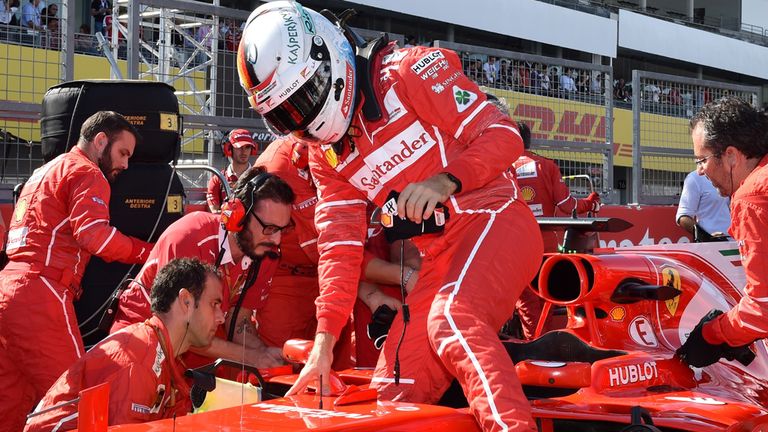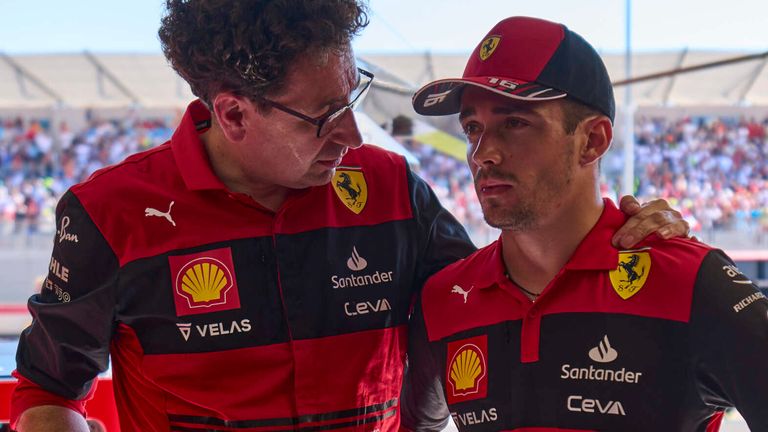In the high-octane world of Formula 1, one name stands above all others: Ferrari. It is more than a team; it is a legend, a religion, the beating heart of the sport itself. The crimson red of the Scuderia is synonymous with glamour, passion, and, above all, victory. Yet, for 17 long years, that legend has been hollow. An entire generation of fans has grown up without seeing a Ferrari driver crowned world champion.
This isn’t just a drought; it’s a systemic, agonizing, and public collapse.
Since their last Constructors’ Championship in 2008, Ferrari has become a case study in how to lose. They have possessed the fastest cars, the most talented drivers, and the largest budget, only to find new and ever-more-creative ways to self-destruct. This is not bad luck. It is a deeply ingrained pattern, a cycle of hype and heartbreak fueled by four fundamental failures: catastrophic strategy, flawed development, shocking driver errors, and an inability to survive the pressure of their own legacy.
Today, we dive deep into the anatomy of this 17-year failure and ask the painful question: Will Ferrari ever win again?

Part 1: The “Clown Wall” – A Legacy of Strategic Blunder
If you want to understand Ferrari’s failure, you need to look no further than the pit wall. In recent years, the Scuderia’s strategists have become a running joke in the paddock, a “clown wall” renowned for snatching defeat from the jaws of victory. The 2022 season stands as a masterclass in this self-sabotage.
The season began with Charles Leclerc in a dominant car, looking like a sure bet for the title. Then, the strategists went to work. In Monaco, Leclerc’s home race, they turned a commanding P1 lead into a heartbreaking P4 finish through a series of delayed, panicked, and stacked pit stops in changing conditions. At Silverstone, they bafflingly left Leclerc on old, slow tires during a late safety car while pitting his teammate, leaving him a sitting duck to be devoured by rivals. Perhaps most bizarrely, in Hungary, they put Leclerc on the hard-compound tire, a compound that every other team had proven was disastrously slow. It was a move that made no sense, and it cost them the win.
This incompetence is not new. It’s a rot that set in long ago. Go back to 2010, to the final race in Abu Dhabi. Fernando Alonso was leading the championship. All he had to do was finish. The team panicked, pitting him to cover a rival, and got him stuck in traffic. He lost the title.
The 2018 season was littered with similar blunders. In Japan, they put their drivers on intermediate rain tires on a bone-dry track. In Germany, they were painfully slow to react to changing conditions. In Italy, they botched team orders. The list is endless, stretching from 2010 to this very season. In 2025 alone, we’ve seen them leave drivers on slick tires in the pouring rain in Australia and suffer a shocking double disqualification in China.
These aren’t isolated mistakes. This is a pattern of chaos, indecision, and an inability to perform basic operational duties under pressure. They have repeatedly failed to capitalize on competitive cars, costing their drivers countless points and, ultimately, multiple championships.
Part 2: The Glass Cannon – Development and Reliability
Starting fast and fading hard has become the Ferrari signature. Far too often, the Scuderia has emerged from winter testing with a rocket ship, only to see it become a midfield runner by the end of the season. This inability to keep up in the relentless, high-tech development war is perhaps their most critical failure.
The 2017 and 2018 seasons are the perfect examples. In both years, Ferrari arguably started with a car as fast, if not faster, than the dominant Mercedes. Yet, by the mid-season break, their development had completely stalled. Mercedes brought upgrade after upgrade, while Ferrari’s updates failed to work. This was compounded by crippling reliability. In 2017, their title hopes evaporated in Malaysia and Japan due to simple part failures.
The 2022 season told the same story. Their car was blindingly quick, but its engine was a ticking time bomb. Title-contender Charles Leclerc suffered engine failures while leading in both Spain and Baku. These catastrophic failures, combined with a slew of grid penalties, derailed his championship bid before Red Bull’s own superior development simply left Ferrari in the dust.
Then there is the strange case of 2019. The car was a straight-line missile, utterly dominant on power-hungry tracks. But it all came to a screeching halt after a “quiet FIA investigation” into the legality of their power unit. After this secret agreement, Ferrari’s performance mysteriously vanished and they were never competitive again that year.
Even when they get it right, they get it wrong. In 2024, a mid-season upgrade in Spain was so misguided that it actually “cost them the constructor’s championship” by setting their development off course for several races. Now, in 2025, after a winter of immense hype, the new car is “peaky,” “inconsistent,” and has an “extremely narrow window,” already slipping behind other teams. This isn’t building a championship; it’s a constant, desperate scramble to fix a flawed foundation.

Part 3: Cracking Under the Crimson Pressure
Driving for Ferrari is not like driving for any other team. It is a national duty, a weight of history that can crush even the greatest talents. And over the last 17 years, we have seen world-class drivers crack under that immense, unrelenting pressure.
Sebastian Vettel, a four-time World Champion, arrived at Maranello as a hero destined to emulate his idol, Michael Schumacher. He left a broken man. The 2018 season rests squarely on his shoulders, with one moment defining the entire 17-year drought. At the German Grand Prix, leading his home race comfortably, a light rain began to fall. Vettel made a tiny, unforced error, sliding off the track and into the barrier. He crashed out of the lead, handing the win to his rival. It was a 25-point swing that irrevocably changed the championship. That season was full of similar errors—spins in Italy, Japan, and the USA.
Charles Leclerc, the team’s homegrown prodigy, has suffered the same fate. In 2022, while desperately trying to keep his failing title hopes alive, he made his own “Vettel in Germany” moment. At the French Grand Prix, he was leading the race when he spun on his own and crashed into the wall, his pained scream of “No!” broadcast to the world. It was the sound of a man being broken by the pressure to be perfect. That same year, he spun out in Imola while pushing too hard.
These aren’t bad drivers. They are elite talents. But the chaos of the team—the bad strategy, the unreliable car—places an impossible burden on their shoulders. They are forced to overdrive, to push beyond the limit to compensate for the team’s other failings. And inevitably, they crack.
Part 4: The Vicious Cycle of Hype and Heartbreak
This brings us to the final, psychological failure: the toxic cycle of hype and heartbreak. Every winter, hope springs eternal. Every season, that hope is brutally extinguished.
After a strong 2017, 2018 was meant to be the year. It ended in collapse. After 2018’s fast car, 2019 was meant to be the year. It ended in scandal. After 2022’s promising pace, 2023 was meant to be the year. It was a flop, utterly dominated by Red Bull.
And then came 2025. After a strong finish to the 2024 season, the hype was perhaps the biggest it has been in a decade. This, finally, was the year. And true to form, the 2025 car is inconsistent, the operational errors are back, and the dreams are already beginning to fade.

Conclusion: A Chaotic Future
Will Ferrari ever win a championship again? To do so, they must be perfect. They must out-develop rivals like Red Bull, who operate with “nearly perfect” operational precision. They must out-strategize teams like Mercedes, a “bulletproof” organization. They must be better than the resurgent, focused McLaren.
Instead, Ferrari just looks “chaotic by comparison.” For a team with all the resources, talent, and history in the world, they “somehow find a way to self-destruct when it matters most.”
The problem isn’t one thing. It’s everything. The strategy is flawed, the development is inconsistent, the drivers crack, and the pressure is suffocating. It is a culture of failure that has been allowed to fester for 17 years.
So, will they ever win again? Of course, they can. This is Ferrari. But based on the evidence, based on the seemingly unbreakable pattern of self-destruction, it’s hard to be optimistic.
Unless something fundamentally changes at the very core of Maranello, the painful answer is no.